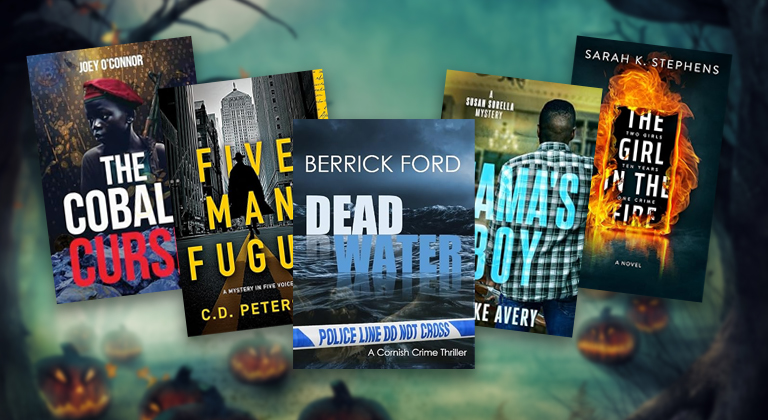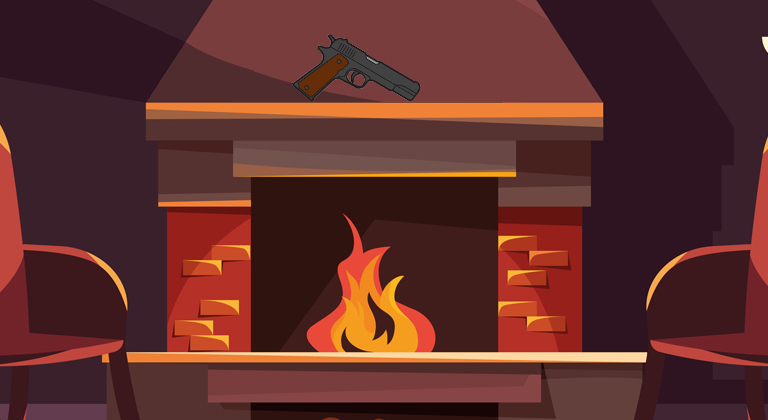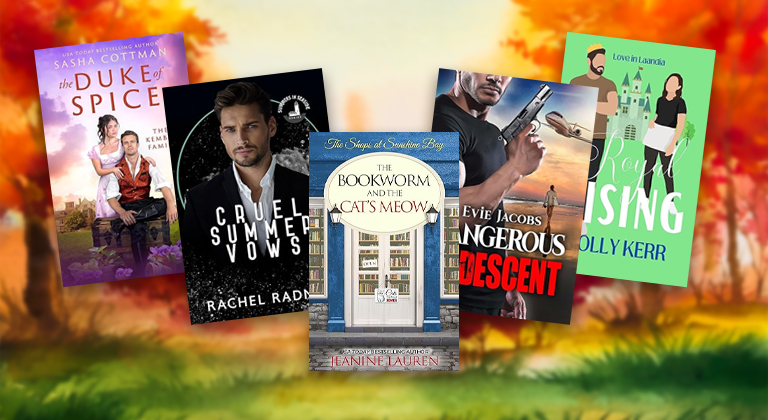Don’t forget to curate your back catalog!
Authors get better with every book they write and publish – that’s inevitable. However, readers often like to start from the beginning of an author’s back catalog and work their way through. How do you avoid losing these potential fans when they insist on starting with your not-so-strong books? Ginger offers up a couple of ideas.
There’s a famous parable about a pottery class in which the students were divided into two groups. One group was assigned to make the best, most perfect pot they could. The other group was assigned to make as many pots as they could – they’d be judged on quantity, not quality.
The result? The students who’d made the most pots had also made the best ones – repeatedly. They’d easily beaten the best efforts of the group who’d been asked to make a single, perfect pot because practice makes perfect – while perfectionism can often lead to paralysis.
The same goes for writers. The best and most successful authors are often the ones who’ve written many, many books. Agatha Christie, for example – the most popular author of the last two hundred years – wrote a hundred of them!
That’s because your books get better with each one – it’s inevitable! You learn the craft of writing by doing, just like the pottery students figured out how to make the perfect pot by making dozens of imperfect ones. I know this personally, as well – I’d written and self-published eleven full-length novels before I had my first really successful one!
But this leads to a weird situation in which reader who’ve discovered you through your newer, stronger books often delve into your back catalog of published works and start reading at the beginning to ‘catch up’ – and that leads to them having to plough through some of your less-than-perfect work before they get to the good stuff.
Does this cost you readers? In the long run, I often believe it does – especially if you’re a self-published author.
As much as I complain about traditional publishing, the standards required to get your book traditionally published in the first place generally mean that an author’s catalog will all be pretty consistently strong. For us self-published authors, however, our first books are often the ones in which we hadn’t figured out the polish and sheen demonstrated in our later books. Hell, my first book hadn’t even seen an editor when I first hit “publish!”
This means that some of your new readers who insist on starting at the beginning of your catalog might find those earlier books a little tougher to get through, and you’re likely to lose a few along the way.
So, how do you resolve the somewhat ironic situation of having readers insist on starting with your first books, despite your best writing often being demonstrated in your newest books?
To my mind, there are two different opportunities:
Option #1: Polish up your earlier books
One of the worst mistakes an author can make is obsessing over your previous books. Oscar Wilde said that writers are verbs, not nouns – we’re not a writer unless we write – and so as an author your mind should generally be focused on your next book, rather than trying to relaunch or reinvent your earlier ones.
However, if your earlier books don’t represent the quality of your current writing, this might be a rule you should consider breaking. If your strategy for success leans heavily into the first book in a series, for example, you’ll want to make sure that book is as strong and compelling as it can possibly be to hook readers into the entire series.
That means it’s definitely worth going back to your first book and examining it critically through the lens of your current writing. It can often be uncomfortable – I speak from experience – but it presents a golden opportunity to revisit your earlier writing and help polish it up until it matches the sheen of your current books.
Obviously, you never want to waste time recreating a book that’s already good enough, or fixing something that isn’t broken. However, you’ll often find your first couple of books do have room for improvement.
I went through this with the first novel in my motorcycle romance series and boy, was it an adventure! Even though that novel had been pretty successful when I’d first published it, I noticed so many mistakes and errors when I revisited it that I cringed!
It took a few weeks, but I went through and sharpened up the novel and edited the entire thing – and now, I’m happy to say, that book is arguably the strongest in my catalog (and a great book to start my series with.) I also know the changes resonated with readers since my advertising conversion rate more than doubled when I went through this process.
But it is a process!
Going through one of your earlier books with the critical eye of your current writing can be humbling, humiliating, and time-consuming. In my rework of book one of my series, I discovered my antagonist had a brother I’d never mentioned again in the subsequent twelve novels featuring him, a ridiculous over-abundance of commas, and some plot details that really didn’t add up. While it was nice to realize how much my writing had improved, it also made me realize how lucky I’d been to enjoy the success I’d had given how many flaws there were in this original book.
You might experience the same thing!
Option #2: Curate your entire back catalog
The first novel I published on Amazon was in 2011, and until recently it had the rare distinction of never having sold a single copy.
Not necessarily because it’s bad – I mean, my kids enjoyed it when I read it to them – but because it’s a totally different style of book to what I’m writing now. It’s a men’s adventure book, written in third-person, and it’s unlike any of my current books, or the books that attract my new readers. Short of re-writing the entire thing as an entirely different book, there’s not much I can do to elevate it to the standards of my current publishing.
So, what’s a writer to do?
Well, a solution in this case is to curate your entire back catalog – as in, consciously think about how your books are presented online, and when somebody goes to your author page on Amazon.
Think about why a newly interested reader might scroll through and choose to begin one of your not-so-strong books as opposed to your better stuff, and fix that problem!
Generally, your author page has books arranged in popularity, so one way to ensure new readers choose to start reading the book you choose is by focusing marketing and advertising on that book. For example, I’ll consistently advertise the first book in my motorcycle club romance series knowing that by doing so, it’ll always be the first book listed on my author page (unless it gets bumped to second place by a brand-new release.)
Secondly, make sure to update the series information about your books to point towards some strong starting points. In the KDP Dashboard there’s now an option to Create and manage a series and you can use that to make sure the strongest books are highlighted most prominently.
Finally, you can just delete the books you’re not so proud of. That sounds extreme, but if you’re not in a situation to reinvent that particular book, it might be worth considering.
Leslie Charteris, the author of the famous Saint adventures, famously wrote or attached his name to 52 different books chronicling the exploits of Simon Templar. The first one, however – The Saint Meets the Tiger – was removed from sale pretty quickly because Charteris didn’t believe it held up to the standards of the second and subsequent Saint novels. This is an option available to you, too.
I know, I know – for an author, it sounds as drastic as cutting off one of your own fingers! However, if the book isn’t making you that much money anyway, and it’s potentially leaking readers because it’s not up to the standards of your other books, it might be an option worth considering.
In fact, that might even work to your advantage! Hardback copies of The Saint Meets the Tiger, for example, now retail for up to $1,036 because of how exclusive they are! Ironically, the weakest book in The Saint series has now become the most valuable one!
(Alternatively, if you really don’t want to remove an underperforming/embarrassing book from publication entirely, you could always pull it temporarily, change the pen name on it, and then republish. This will disassociate that book from the pen name you’re concentrating on while still keeping it available for sale.)
Other options
Another option that has improved not just my book sales, but my writing in general is to divide up a long-running series into ‘seasons’ with strong entry points for new readers.
I try and make sure all my books are accessible without having to have read the previous books in the series, but I also shout out loud in the blurb for a few of the books in my 12-book series that this book is “a great entry point” for the series. This means I get the benefit of a 12-book series (and all that lovely read-through) but I don’t have to focus on getting a reader hooked on Book One. They can jump in with any of three or four different books that lead into story arcs to keep them reading, but won’t nudge them out because they hadn’t read earlier books in the series.
Whichever option you experiment with, the important thing is to consider it all through the lens of a reader, not an author. Don’t think about it as “which book do I want them to read first?” Think about presenting that book as “why should this book be the first one a reader chooses?”
Making those books the cornerstones of your author identity can go a long way towards that, and by thinking about the entire conundrum critically, it enables you to maximize the number of new readers you retain every time a new book draws new visitors to your author pages.
If you’d like advice on publishing, marketing, or advertising your books on Amazon, check out our Author Services page, where we offer a variety of different services including 1-on-1 consulting about how to achieve more success with your book.











